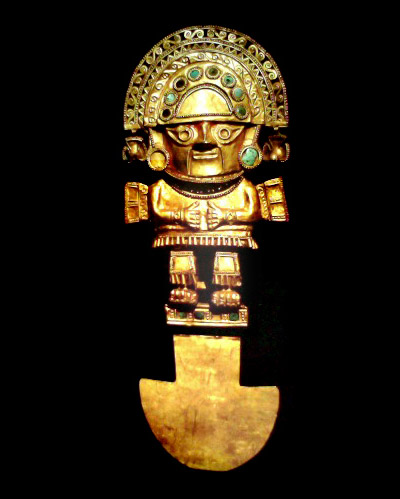
Ready to experience the wonders of Peru? Get in touch, and we’ll help you plan the adventure of a lifetime!

Ready to experience the wonders of Peru? Get in touch, and we’ll help you plan the adventure of a lifetime!

Email Consent Notice
By checking the box, you consent to PeruVisit.com collecting and processing your email address for the purpose of sending newsletters, promotional offers, and information about tours in Peru.
You acknowledge and understand that:
For full details on how we manage personal data, please refer to our Privacy Policy.
Tumi – the resounding echo of a ceremonial blade, a testament to ancient Peruvian rites that transcended through the annals of time into the grandeur of the Inca Empire. Forged often from a single, precious metal block, with a penchant for gold, its handle took on the elegant geometry of a triangle or trapezoid. The figure adorning the knife's hilt is not merely decorative; it's a divine portrayal of Nylamp, a god revered by the illustrious Lambayeque culture.

The most illustrious specimens of the ceremonial Tumi knife have emerged from the archaeological embrace of the northern shores of Peru, within the Lambayeque region. These treasures belong to the era of the Lambayeque civilization, also known as Sicán (Sicán or Lambayeque, 12th - 10th centuries AD).
While the Lambayeque civilization prominently showcased the Tumi, it wasn't exclusive to them; many other cultures wielded this ceremonial blade. To fathom the purpose of the Tumi, one needs to turn to the vivid depictions etched onto the ceramic canvases of ancient cultures. This sacred knife played a multifaceted role – from sacrificial offerings of animals (and at times, humans) to being the tool of choice for surgical procedures, including the widely practiced skull trepanation by pre-Inca civilizations.
Today, the Tumi transcends time and culture, becoming one of the most popular motifs in Peruvian souvenirs.
Contact us to book your perfect tour and learn more about Peruvian culture.

Get in touch, and we’ll help you plan the adventure of a lifetime!